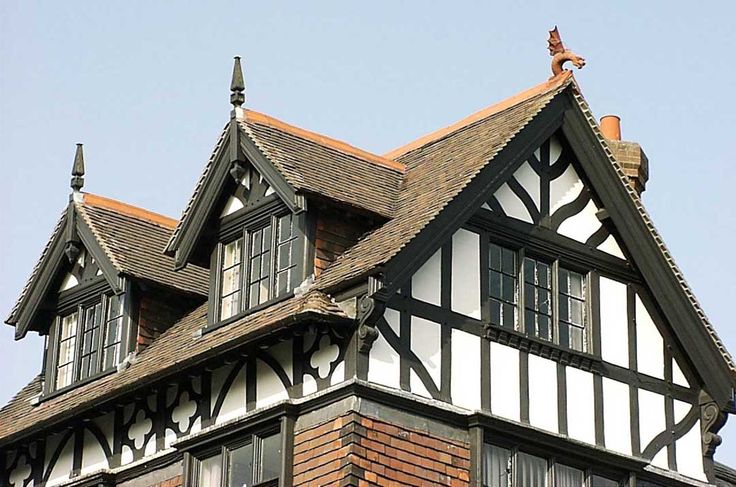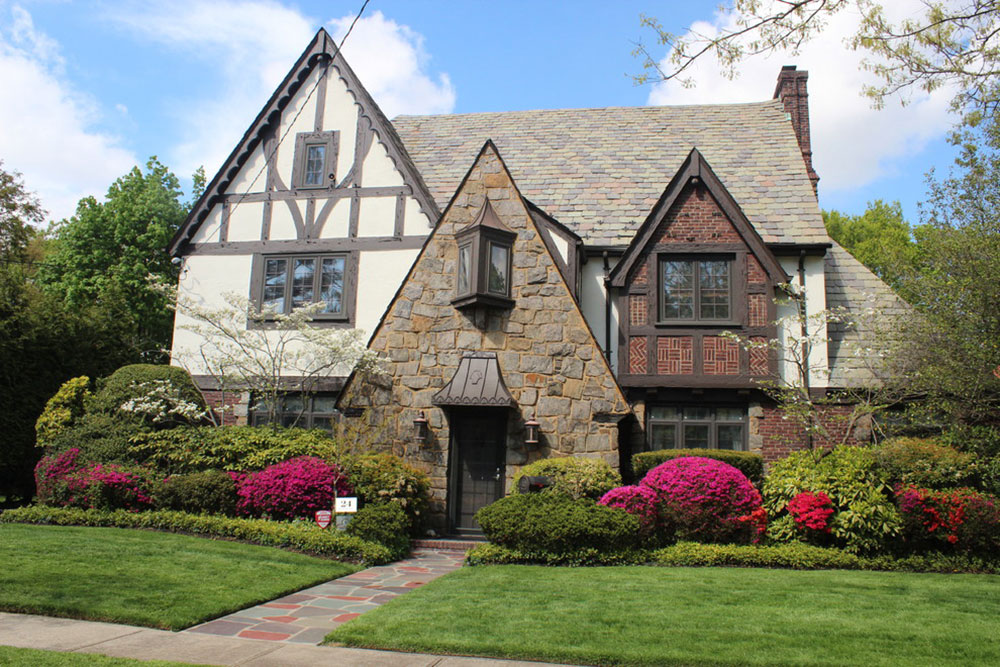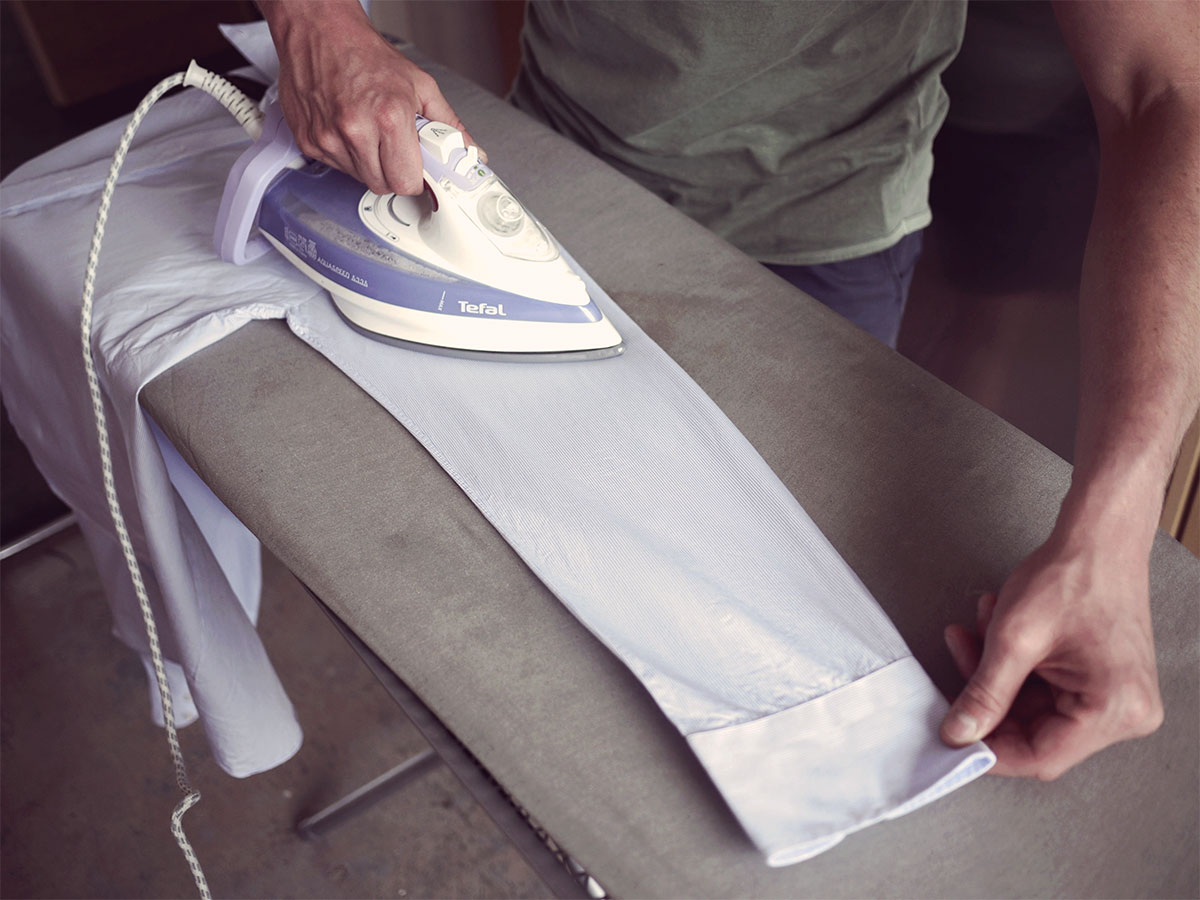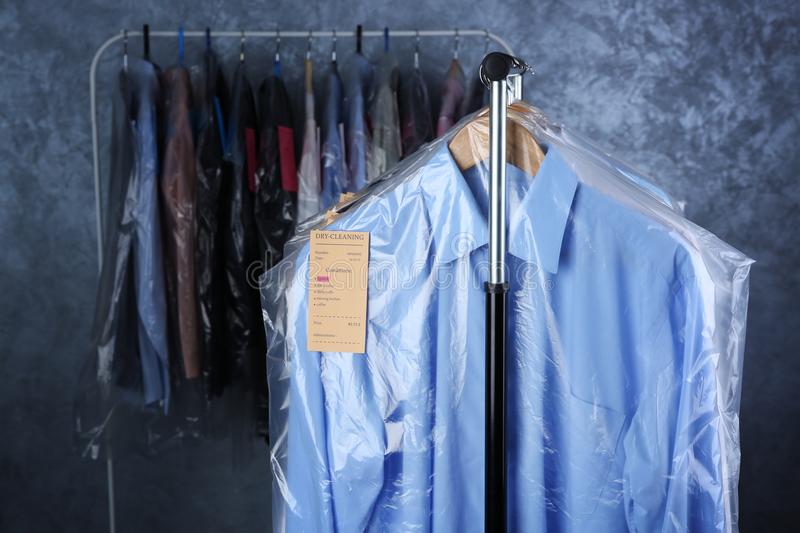Zippers are a common problem in the modern world. They are used on so many things that it’s easy to have one break on you at some point. Besides damaging your garment or bag, a broken or stuck zipper can be very annoying and embarrassing.
The good news is that zippers can be fixed, but it takes know-how and patience to do so. You may not want to spend hours trying to fix something that isn’t worth the time or effort, which makes finding out how to fix a broken zipper an important skill for everyone.
This guide will teach you several ways of fixing your broken zipper without having to buy a new piece of clothing or bag with working zippers again. Let’s get started.
What You’ll Need
Bar soapWD-40 LubricantStrong threadPencilScissorsRuler, tape measure andMirrorNeedle nose pliers and wire cutters
Instructions on How to Fix a Broken Zipper
If your entire zipper is ripped out and you have to replace it, then you’ll have to know how to operate a sewing machine. If you can do simple sewing projects like how to sew curtains, repairing your zipper will be a walk in the park. Check for demos online on repairing broken zippers and do it yourself in the comfort of your home. The following steps should guide you:
Remove the Bottom Stop from the Zipper
Use the wire cutters to snip off the bottom stop on your zipper. This is often too tight around the teeth to easily pry free with your fingers, but you will want this piece again for your zipper to work at all. You can also pry off the zipper’s bottom stop by using pliers to get a good grip. Prying off with a little band of metal or plastic at the bottom of the zipper teeth helps the zipper slide more easily.

Image caption: https://guide-images.cdn.ifixit.com/
Position the Zipper Pull
Once you’ve removed the metal or plastic, stop. Use a pull tab to drag the zipper slider apart, widening the opening of your zipper. Position whichever side of the metal or plastic bottom stop you removed closest to where the actual bottom part of the zipper is located.
Realign Zipper Teeth
Lay the broken zipper face down on a flat, sturdy surface. If there are any teeth that have come out of alignment, use the pliers to pinch them back into place. Run your fingers carefully along all of the teeth to ensure they are even with one another. This will enable all zipper teeth to mesh smoothly. If you’re unable to mesh them smoothly, then mark the spot on the zipper with a pencil or marker and use needle-nose pliers to pinch the teeth together until you’ve reached your desired alignment.
Reposition the Zipper Pull
Move your slider up to the top of the zipper to determine the extent of your zipper’s unzipping capabilities. If a portion of the zipper needs to be sewn back together, cut the slider off with sharp wire cutters. If you can still function as desired without sewing, you should remove the slider completely and evenly lift both sides of the teeth until they meet at an ideal alignment.
The left side of the zipper represents the top half, and the right side represents the bottom half. Add a thick line of glue to both sides of each tooth that meets in the middle, then clamp with needle-nose pliers until they stand upright and dry overnight.
Thread the Sewing Needle
Use a heavy thread or fine-weight monofilament fishing line to thread the needle and tie a knot on one end. Knots at the beginning and ends of seams help prevent your stitching from coming undone over time. Don’t worry if you have a heavy thread; instead, double the thread and knot the ends together.
Create New Zipper Stop
Pull the thread up through the zipper’s top stop and the zipper tape. The top stop is a metal or plastic flange on the zipper’s head that prevents the slider from going further up the track. Ensure the zipper pull or slider is above the spot where you want to add a new stop.
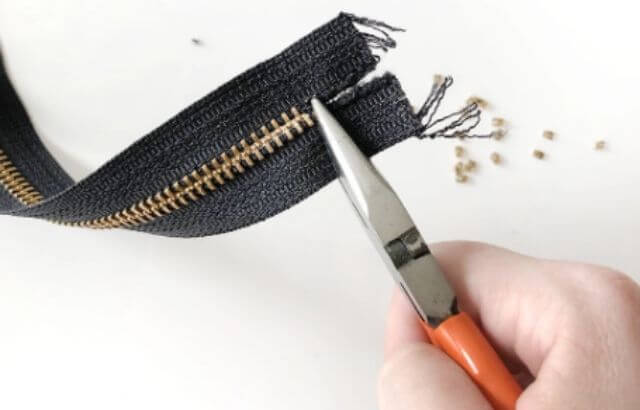
Image caption: https://homeaffluence.com/
Repair the Damaged Teeth
If the teeth of the zipper are damaged more than the zipper itself, you need a new zipper. However, if the missing or damaged teeth can be replaced with a few stitches of your thread, you should be able to fix the broken zipper and skip the step for opening up the zipper. Although it will shorten your zipper’s length, it will make it stay closed.
Secure the Thread
Secure the thread by making a couple of stitches over the slit through which you pull the zipper’s cord once you’re done sewing.
How to Fix a Stuck Zipper
If your zipper slider is stuck and not moving, the most common reason might be your thread or fabric. They might be wedged on the teeth or caught up in the slider. Here are steps to remedy such a problem:
Stop Struggling and Investigate the Cause
Stop tugging your stuck zipper up and down immediately, as you could damage the one-way nylon teeth. If your zipper happens to be jammed on a little bit of fabric, don’t keep tugging on it out of frustration. Turn your clothing or bag inside out and follow along the zipper lines with your fingers to find the source of the problem.
Retract the Fabric
Unpick any thread or fabric that’s caught in between the zipper, and use a needle to remove any stubborn fabric left behind. Apply the pulling motion to the fabric and not the zipper to gently pull it back down. Use needle-nose pliers or tweezers for better results.
Color the Zipper Teeth with Graphite Pencil
Take a pencil and rub the graphite along the teeth until you get to the bottom of the zipper. The graphite pencil will lubricate any gaps between teeth, so they grip better. Make you run the pencil lead on the entire zipper if it’s not working.
Up Your Lubrication Game
If you’ve tried so many things, but there’s still a pretty significant jam, up to your lubrication game by using household items that work as lubricants for stuck zippers. Household items lubricants for stuck zippers include talc powder, lip balm, baby powder, bar soap and vaseline. You can also use a glass cleaner or wax paper if you don’t have any household items to use.
Before choosing a lubricant, consider the fabric your clothing or bag is made of. Some lubes could leave an unpleasant, flaky residue on your favorite clothing. Make sure you apply along with the zipper teeth the same way you applied the graphite pencil. Now gently tug on your zipper to see if this will work for you, but remember that it might not be the same as before.
FAQs on How to Fix a Broken Zipper
Why does my zipper not close?
One of the biggest problems that people face with their zippers is that they don’t zip close. Just like your button, you might be missing teeth (the little metal pieces) on the zipper. You can use tweezers or needle nose pliers to pull out each tooth until it has enough room to go back together. Do not squeeze so hard because you can break the slider.
Can you replace zipper teeth?
Yes, you can replace a zipper tooth if yours are missing or broken. All you need to do is purchase a replacement kit from the store and then replace your teeth with that small metal strip. You will not have to sew in new teeth; they snap into place.
Final Thought on How to Fix a Broken Zipper
As you can see, fixing a broken zipper can be done by yourself. All you need is to follow the steps above, and you will get the solutions on how to fix a broken zipper. So instead of throwing away your tool bag or tent, try these tried and true tips to fix your broken or stuck zipper. You can also learn other simple DIY projects such as how to sew a face mask and have fun with it as well as save money in the process.
The post How To Fix A Broken Zipper appeared first on Kitchen Infinity.
Did you miss our previous article…
https://chefbuano.com/?p=579




